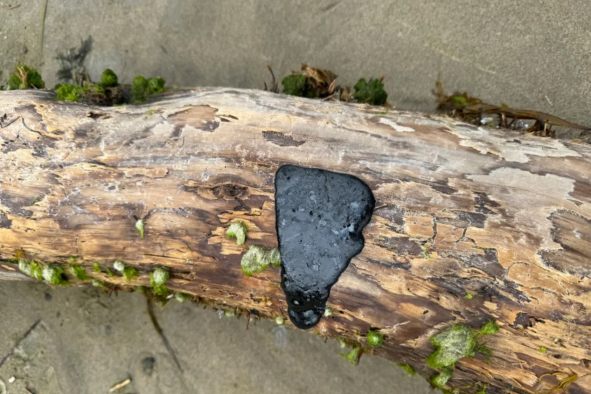The beginnings of a strange layer of molten rock deep inside the Earth may have finally been figured out by geoscientists.
This layer, known as the D" layer, is about 1,900 miles underneath the Earth's surface, resting between the liquid outer core and the solid mantle, and varies massively in thickness across the globe.
Exactly how this layer formed has mystified scientists for years, but according to a new paper in the journal National Science Review, it may have been created when a Mars-sized planet slammed into the Earth billions of years ago.
The D'' layer is characterized by significant seismic heterogeneity, or diversity: seismic waves traveling through this region show large variations in velocity, indicating differences in temperature, composition, and solidity within the layer. It also plays a crucial role in mantle convection and the thermal evolution of the Earth, acting as a thermal and chemical boundary layer between the hot core and the cooler mantle above.
The Giant Impact Hypothesis suggests that the moon was formed from the debris ejected into orbit around Earth after a collision between the proto-Earth and a Mars-sized body, often referred to as Theia. This colossal impact is believed to have occurred around 4.5 billion years ago, during the early stages of the solar system's development.
The collision is thought to have created a planet-wide magma ocean. The presence of water during the solidification of this early magma ocean significantly influenced the chemical composition and structure of the D" layer at the boundary between the inner core and mantle.
"The prevailing view suggests that water would have concentrated towards the bottom of the magma ocean as it cooled. By the final stages, the magma closest to the core could have contained water volumes comparable to Earth's present-day oceans," study co-author Jie Deng, a researcher at Princeton University, said in a statement.
The extreme conditions at the base of the magma ocean, characterized by high pressure and temperature, fostered unique chemical reactions between the water and minerals. The study suggests that these conditions favored the formation of an iron-rich phase known as iron-magnesium peroxide.
"Our research suggests this hydrous magma ocean favored the formation of an iron-rich phase called iron-magnesium peroxide." study co-author Qingyang Hu, a researcher at China's Center for High Pressure Science and Technology Advanced Research, said in the statement.
"According to our calculation, its affinity to iron could have led to the accumulation of iron-dominant peroxide in layers ranging from several to tens of kilometers thick."
This iron-rich peroxide phase being present would mean that the mineral composition of the D" layer is different from what we believed. This phase is characterized by low seismic velocities and high electrical conductivity, making it a potential candidate to explain the unique features observed in the D" layer.
"Our findings suggest that iron-rich peroxide, formed from the ancient water within the magma ocean, has played a crucial role in shaping the D" layer's heterogeneous structures," Hu said.
The iron-rich peroxide may act as an insulator, preventing mixing and therefore explaining why the D" layer is so unpredictably thick and thin in certain places.
"This model aligns well with recent numerical modeling results, suggesting the lowermost mantle's heterogeneity may be a long-lived feature," Deng said.
Do you have a tip on a science story that Newsweek should be covering? Do you have a question about geology? Let us know via science@newsweek.com.
Disclaimer: The copyright of this article belongs to the original author. Reposting this article is solely for the purpose of information dissemination and does not constitute any investment advice. If there is any infringement, please contact us immediately. We will make corrections or deletions as necessary. Thank you.



